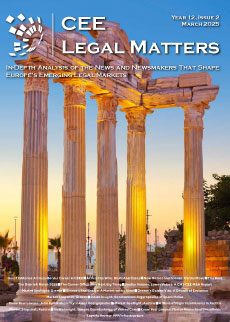In 2016, when local authorities had been able to levy municipal taxes for more than a year already, we summarised the lessons that had been learned up to then from this newest genre of local taxes. At the time, we were waiting with bated breath to see what the future would bring, that is; to see just how creative local governments would get in thinking up new taxes. So what did ever happen to the ‘kitsch tax’, the ‘pony tax’ and all those other local levies? Now that a few years have passed, the time has come for us to once again peer into the weird and wonderful world of municipal taxes.
Municipal taxes in the pandemic years
Contrary to expectations, the domestic tax landscape has not been flooded with a growing number of ever more absurd local taxes, and it seems that only a very small proportion of local municipalities have so far seen potential in the genre. While in 2016, the year following its launch, there were around 60 municipalities that introduced some type of municipal tax, this number has not increased significantly in the years since then. Currently, the number of local municipalities that charge a municipal tax is between 100 and 120, a negligible proportion of the approximately 3,200 local authorities in Hungary.
There are, of course, many reasons for this. In some places the idea of a municipal tax had to be dropped due to public protest. The ‘horse and pony tax’ of Pilisjászfalu, for example, which was introduced in 2016, fell victim to this, and was scrapped by the municipality that very same year.
And if the widely accepted premise that Hungarians don’t like paying taxes wasn’t enough of a deterrent, the government itself prohibited councils from introducing any new local or municipal taxes in 2021 and 2022 as part of its measures aimed at shielding people from the financial effects of the pandemic.
Old classics rediscovered
Perhaps the latter also explains why in 2023 some councils have been searching with renewed vigour for proven formulas in the field of municipal taxes. It’s still the case, therefore, that the most common type of municipal levy is the arable land tax. Several councils have introduced a payment obligation of this kind this year, while the already existing arable land, reed or even fish-pond taxes are mostly doing fine too, thank you very much.
But in addition to the arable land tax, various ‘tower taxes’ are also enjoying a revival. For example, the village of Tivadar in Szabolcs-Szatmár Bereg county, with a population of about 160, has levied a progressive tax on structures taller than 20 meters since March of this year. Thus, for instance, structures taller than 50 meters are taxed by the council at HUF 5 million per year, while towers of under 30 meters are taxed at only HUF 1.5 million a year.
Besides the various categories of arable land, it’s common for local municipalities to tax land based on other characteristics. A good example of this is Mátraszőlős in Nógrád county, where the council has imposed a local tax on forests and wooded areas. But the tax levied on land classified as an ‘enclosed garden’ (for example in Söréd, Dömös, Kisecset or Felsőörs) has also been enthusiastically embraced by a number of municipalities. A key feature of the latter is that the municipalities usually demand the tax for the enclosed gardens by parcel number, in a lump sum.
Some fun facts here: Délegyháza in Pest County has imposed a municipal tax on the area of water reservoirs, mine lakes, swamps, fishing lakes and recreational lakes, while in Kőszeg and Gyöngyösfalu household wastewater storage tanks have been made the subject of a municipal tax.
In Óbuda, the town-scape protection tax, dubbed the ‘kitsch tax’, has been abolished, and in its place the municipality has introduced a performance-based tax on motor-driven watercraft, similar to the tractor tax. Nagymaros and Budakalász, among others, have followed this example.
And if it’s construction we’re talking about: in Leányfalu, owners of private buildings subject to planning permission are charged a one-time, square metre-based tax, which is probably an attempt by the council to prevent excessive building.
Finally, the village of Szűcsi, in Heves County, with 1,400 inhabitants, has imposed a municipal tax on jetties and fisherman’s huts, a somewhat humorous example of how to choose taxable objects based on local characteristics.
And where the Supreme Court has had a say...
Thanks partly to the weak interest municipalities have shown in imposing taxes of this kind, relatively few cases related to municipal taxes have reached the Municipal Council of Hungary’s Supreme Court, but there have nevertheless been one or two instructive examples.
In Balatonfüred, for instance, the local municipality identified 14 suburban properties that it thought should be used solely for agricultural purposes and tried to force the owners of these properties to do just that by including the properties, specified street-by-street, in a local tax decree imposing a municipal tax on them. The Supreme Court retroactively annulled this municipal tax. In its view, the municipality’s attempt to levy the tax was not consistent with the principle that rights should be exercised in accordance with their intended purpose, and it was in no way acceptable that a municipality should introduce a punitive local tax for what were in effect urban-policing purposes.
Similarly, the Supreme Court had to look at what was going on behind the scenes in the case of the “undesirable persons tax” in Alsónémedi. There, the local municipality introduced a tax of HUF 800 per day through a highly convoluted set of regulations that was ostensibly imposed on persons with a registered address in the territory of the municipality, or on people staying there or just de facto living there (in other words, everyone), but thanks to a broad range of exemptions, it was in fact only the increasingly numerous Romanian guest workers in the municipality who would have had to pay it. In its annulment decision, besides the municipality’s discriminatory intent, the Supreme Court also objected to the purpose of the taxation, stating again that a municipal tax cannot be introduced to achieve public-policing goals.
Finally, the ambitious plan of the Pestszentlőrinc-Pestszentimre Municipality for the introduction of an air passenger tax deserves a mention. Under its respective decree, which came into force in 2023, private individuals would have had to pay a flat-rate fee for their arrivals, departures, transfers and transit journeys to, from or through the airport located in the municipality’s area of jurisdiction (i.e. Liszt Ferenc International Airport). The decree would have made the ground handlers and airlines jointly and severally responsible for collecting the tax and, in the event of failure to do so, for paying the shortfall, thus imposing a huge and effectively unmanageable administrative burden on these operators.
The legality of the air passenger tax was examined by the Supreme Court on a very broad basis, and therefore the decision in this case will certainly be a milestone in future cases concerning municipal taxes. As one might have expected, the Supreme Court ended up annulling the air passenger tax. Among the many concerns raised by the Supreme Court, in its opinion the tax decree did not meet the requirement of normative clarity due to its shortcomings and lack of detailed elaboration. In this regard, the Court specifically pointed out that the municipality itself had not examined whether air travel, as the object of the tax ordinance, was not subject to another public tax regulated by law. The municipality had effectively left the task of investigating this matter to the taxpayer. And according to the Court, the tax ordinance did not meet the constitutional requirement of legal certainty either, if for no other reason than for the fact that Liszt Ferenc International Airport is located in the jurisdiction of several municipalities and thus not even the taxable object of the air passenger tax can be clearly determined from the municipal decree.
By Dániel Veres, Advisor, Jalsovszsky

















